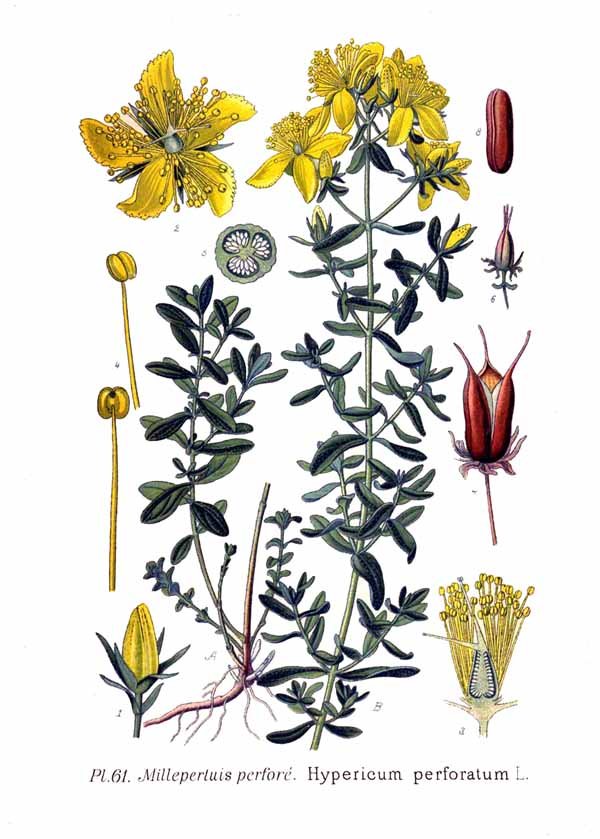St.John's Wort

ABOUT ST. JOHNS WORT: Hypericum perforatum originated in Europ and Asia, but gradually it spread all over the world as an invasive species. It’s also referred to as perforate St Johns wort or common Saint John's wort. Hypericum perforatum is a herbaceous perennial plant with extensive, creeping rhizomes. It has erect stems which are branched in the upper section. The flowers are yellow but leave ruby red smear when squished. It can grow up to about one meter. It blossoms from may until September but is usually harvested on St.Johns day – 24th of June. The ground it grows on should be fertile and the climate warm. It is usually sown in spring or fall.
HISTORY: The use of St.Johns wort in treating depression was documented from classical antiquity and was a standard component of theriacs, from the Mithridates of Aulus Cornelius Celsus' De Medicina (ca. 30 CE) to the Venice treacle of d'Amsterdammer Apotheek in 1686. There is a legend that St.John’s wort collects sunshine during the summer so it can give it back to people during the winter. Natural remedies from St.Johns wort are sometimes referred to as ‘’sunshine in a jar’’.
USE: This is one of the most precious plants known to mankind. In folk medicine, it is believed there is no part of the mind or body that St.johns wort can’t heal. The most cherished and best-known use of St.Johns wort is in treating depression. A Cochrane review of 29 clinical trials, done in 2008., concluded that it was superior to placebo in patients with major depression, as effective as standard antidepressants and had fewer side-effects. In Germany, it is often subscribed by medical professionals in curing mild to moderate depression. What I found to be the most important is that it is safe to use by children and teens. That is great news to me because I know how common medicine can often zombie kids when dealing with depressive disorders and they have a narrower range of medicine safe to use at it is. It can, as any remedy, have side effects: gastrointestinal issues such as diarrhoea or throwing up, headache, lightheadedness, dry mouth, disorientation are just some of them. Be sure to talk to your doctor first before starting treatment with St.Johns wort.
Another well know the use of St.Johns wort is in skin treatment. The oil made from it, Oleum hypericin, can soothe and treat burns and other wounds and help the skin heal. It is made by maceration of the flowers in the olive oil.
It can also be used in cooking as a spice and it especially goes well with freshwater fish.
FUN FACTS: St.Johns wort is one of the most important plants cultivates in Germany. In 1991. St.Johns wort was grown on over 240 hectares in Austria and over 630 hectares in Germany in 1999. It is also commercially grown in East Europe and South America but despite that, it is noted as a harmful weed in over 20 countries.
